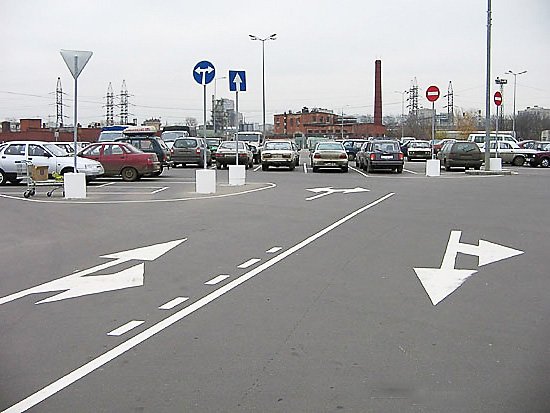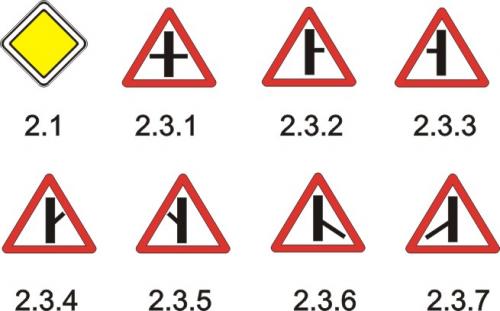
Main road - traffic rules, designation and coverage area
Content
Determining the priority during the passage of road intersections is an important factor in traffic safety. For this, road signs have been developed and such a concept as the main road - traffic rules clearly and unambiguously reflect these tools for the interaction of drivers.
Main road - definition of traffic rules, designating signs
The definition of traffic rules for the main road is as follows: the main one, first of all, is the road on which signs 2.1, 2.3.1–2.3.7 or 5.1 are placed. Any adjoining or crossing will be secondary, and drivers on them will be required to give way to vehicles moving in the direction indicated by the above signs.

Priority is also determined by the availability of coverage. With a solid roadbed (materials made of stone, cement, asphalt concrete), in relation to the unpaved, is also the main one. But the secondary one, which has a certain segment with coverage just before the intersection, is not equal in importance to the crossed one. You can also distinguish a secondary one by its location. Any road is considered the main one for exits from adjacent territories. Consider the signs denoting the main, and how they are used.

- 2.1 is placed at the beginning of the segment with the right of way through unregulated intersections, as well as immediately before intersections.
- If at the intersection the main one changes direction, then in addition to 2.1, a sign 8.13 is installed.
- The end of the section where the driver was driving along the main one is marked with a sign 2.2.
- 2.3.1 informs about the approach to the intersection with directions of secondary importance simultaneously on the left and on the right.
- 2.3.2–2.3.7 - about approaching the junction on the right or left of a secondary road.
- The sign "Motorway" (5.1) indicates the main road, which is subject to the order of movement on motorways. 5.1 is placed at the beginning of the highway.
Signs on minor roads
To warn drivers that they are driving on a secondary road and are approaching the intersection with the main one, they put up a “Give way” sign (2.4). It is placed before the exit to the main one at the beginning of the junction, before the intersection or exit to the motorway. Additionally, from 2.4, a sign 8.13 can be used, informing about the direction of the main one on the intersecting section.
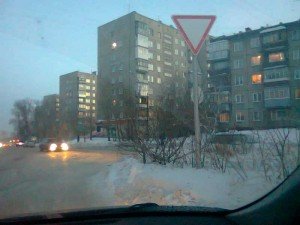

Sign 2.5 may be placed before the intersection with the main one, which prohibits passing without stopping. 2.5 obliges to give way to vehicles traveling on the crossed roadway. Drivers must stop at the stop line, and when there is none, at the border of the intersection. Only after making sure that further movement is safe and does not interfere with traffic in the intersecting direction, you can move off.




Watch this video on YouTube
SDA on the actions of drivers at road intersections
For drivers who are moving in the direction designated as the main road, traffic rules prescribe priority (primary) traffic through unregulated intersections, intersections with secondary directions. Drivers traveling in a secondary direction are required to yield to vehicles moving along the main one. At regulated intersections, you should be guided by the signals given by the traffic controller or traffic lights.
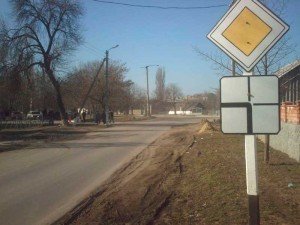

The "Main Road" sign is usually located at the beginning of the street, making it difficult to determine which of the carriageways is the primary one. In order to prevent erroneous interpretation in the absence of the provided signs, you should know the requirements of traffic rules. When approaching the intersection, it is necessary to study its right near corner. In the absence of the above signs, inspect the near, and then the far left corner. This is necessary to identify the sign "Give way". When it is covered with snow or turned upside down, they look at the location of the triangle - at 2.4, the top is directed down.
Then they determine which direction of movement this sign belongs to, and find out the priority of travel. Also, the primacy of the road can be judged by the presence of the sign 2.5.
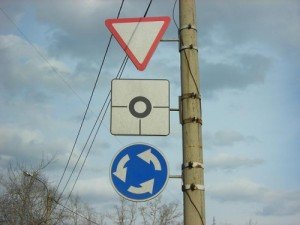

If it is difficult to determine the priority direction, then they are guided by the “Interference on the right” rule - vehicles moving on the right are allowed to pass. If you are on a priority direction, you can drive straight ahead or turn right. If you want to make a U-turn or turn left, then give way to traffic coming towards you. Determining dominance, it is necessary to take into account the location of the road - for example, leaving the yard or from the village is of secondary importance. Whenever there are no signs and it is impossible to determine the type of coverage, the direction of travel should be considered secondary - this will reduce the risk of creating an emergency.


Watch this video on YouTube

